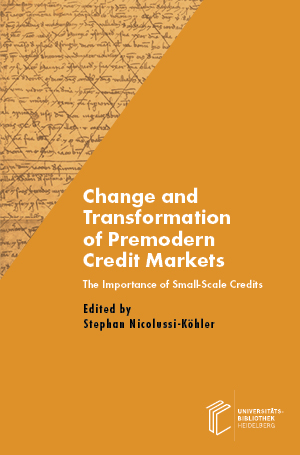How to Cite
License (Chapter)

This work is licensed under a Creative Commons Attribution-ShareAlike 4.0 International License.
Identifiers (Book)
Published
The Other Side of Banking. Private Lending and the Role of Women in Early Modern Italy
Abstract This article examines the role of women in private capital markets in northern Italy in the seventeenth and eighteenth centuries. If bankers, financial dealers and major merchants were prevalent in the institutionalized credit markets, women proved crucial in private lending intermediated by notaries. The assets allowing them to participate in the credit market derived principally from their dowries, mainly consisting of cash but also including real estate. They used their properties as collateral for mortgages, which were employed to meet family needs or to fund their husbands’ businesses, in some cases rescuing them from bankruptcy and safeguarding their reputation. The cash was invested in interestrate loans: female capital was not mere “petty finance”. Many widows coming from the aristocracy or the urban elite had large sums at their disposal which were channelled into the circuits of credit to finance manufacturing, trade and agriculture, boosting silk production in some regions, the opening of new shops and partnerships in others, and promoting local and international commerce. A portion of this capital was also lent to rural communities for paying taxes, funding current expenditures, and modernizing infrastructure.
Keywords informal credit market, notaries, women, early modern age, Italy



